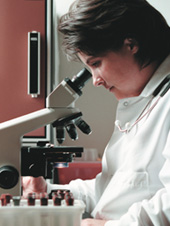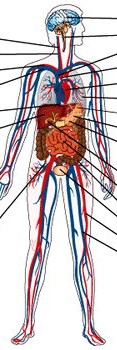|
|
 |
|
Infectious Diseases |
 |
 |
 |
|
|
|
|
|
|
|
|

Infectious diseases are caused by micro-organisms that
enter and reproduce in the body. This causes damage to
the body tissues and causes the symptoms of the disease.
Modern medicine has devised many treatments to help cure
infectious diseases. |
|
|
The record of human suffering and death caused by
smallpox, cholera, typhus, dysentery, malaria, etc. establishes
the eminence of the infectious diseases. Despite the
outstanding successes in control afforded by improved
sanitation, immunization, and antimicrobial therapy, the
infectious diseases continue to be a common and
significant problem of modern medicine. The most common
disease of mankind, the common cold, is an infectious
disease, as is the feared modern disease AIDS. Some
chronic neurological diseases that were thought formerly
to be degenerative diseases have proven to be
infectious. There is little doubt that the future will
continue to reveal the infectious diseases as major
medical problems.
cholera, typhus, dysentery, malaria, etc. establishes
the eminence of the infectious diseases. Despite the
outstanding successes in control afforded by improved
sanitation, immunization, and antimicrobial therapy, the
infectious diseases continue to be a common and
significant problem of modern medicine. The most common
disease of mankind, the common cold, is an infectious
disease, as is the feared modern disease AIDS. Some
chronic neurological diseases that were thought formerly
to be degenerative diseases have proven to be
infectious. There is little doubt that the future will
continue to reveal the infectious diseases as major
medical problems.
In the study and care of patients with infectious
disease, physicians use some terms that are not easy to
define precisely. A definition of infection as growth of
a microorganism in an animal with any resulting host
response will include essentially all of the infectious
diseases of humans. Many of the body surfaces of humans
that communicate with the external environment (e.g.,
the skin and the gastrointestinal and respiratory
tracts) support a normal flora, but these microorganisms
usually do not invade and cause disease. Under the right
circumstances, however, elements of the flora can invade
and produce an infection.
A number of other terms are commonly used in describing
the infectious diseases. Pathology refers to the abnormality
induced by an infection, and pathogenesis to the events
producing the pathology. A pathogenic microorganism is a
microbe that can cause pathology. Disease refers to the
existence of pathology and an infectious disease is a
disease caused by a microorganism. Virulence is a term
referring to the power of a microbe to produce disease
in a particular host. For example, a microorganism may
be avirulent for a normal host and highly virulent for
an immunosuppressed host. Immunity refers to the degree
of resistance of the host for a particular microbe.
Finally, it must be appreciated that the occurrence of
an infectious disease in a human is a dynamic process
that represents a host-parasite interaction. The
parasite attempts to multiply and the host defenses seek
to control this effort. The task of the physician is to
recognize that such a process accounts for the patient's
problem and to intervene for the benefit of the patient.
infectious diseases. Pathology refers to the abnormality
induced by an infection, and pathogenesis to the events
producing the pathology. A pathogenic microorganism is a
microbe that can cause pathology. Disease refers to the
existence of pathology and an infectious disease is a
disease caused by a microorganism. Virulence is a term
referring to the power of a microbe to produce disease
in a particular host. For example, a microorganism may
be avirulent for a normal host and highly virulent for
an immunosuppressed host. Immunity refers to the degree
of resistance of the host for a particular microbe.
Finally, it must be appreciated that the occurrence of
an infectious disease in a human is a dynamic process
that represents a host-parasite interaction. The
parasite attempts to multiply and the host defenses seek
to control this effort. The task of the physician is to
recognize that such a process accounts for the patient's
problem and to intervene for the benefit of the patient.
The infectious diseases are usually characterized by the
dominant organ system involved. This classification is
useful as a guide in approaching patients. For example,
patients do not present complaining of pneumococcal
pneumonia; patients present complaining of fever, cough,
and chest pain. The physician localizes the disease to
the chest (respiratory infection) and then proceeds to
develop data proving the presence of a pneumonia caused
by the pneumococcus. Thus, we classify infections as
respiratory infections, gastrointestinal infections,
genitourinary infections, nervous system infections,
skin and soft tissue infections, bone and joint
infections, cardiovascular infections, and generalized
(disseminated) infections. The chapters in this section
are organized according to this scheme. The section is
intended primarily to help the student begin to
integrate the knowledge of microbiology and immunology
into a framework useful for the practice of medicine.
The diagnosis, prevention, and treatment of the
infectious diseases is a stimulating and gratifying
process.
|
|
|
|
|
|
Disclaimer - The
contents of this site are for informational purposes
only. Always seek the advice of a qualified
physician for any doubts. |
|
| |


